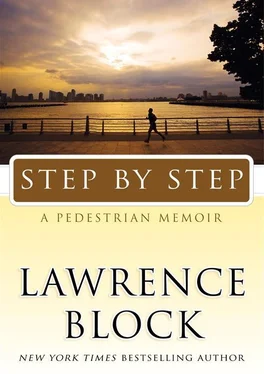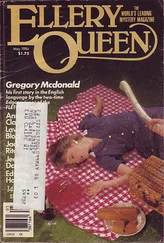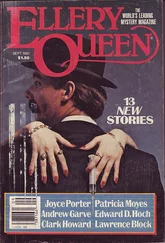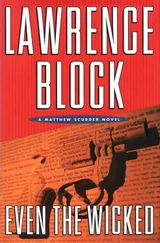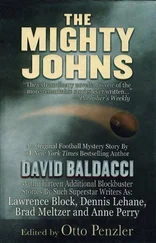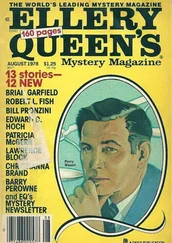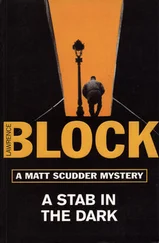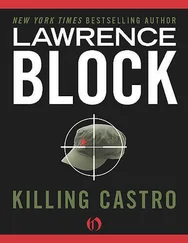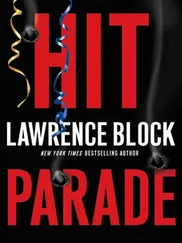Lawrence Block - Step by Step
Здесь есть возможность читать онлайн «Lawrence Block - Step by Step» весь текст электронной книги совершенно бесплатно (целиком полную версию без сокращений). В некоторых случаях можно слушать аудио, скачать через торрент в формате fb2 и присутствует краткое содержание. Год выпуска: 2009, ISBN: 2009, Издательство: William Morrow, Жанр: Биографии и Мемуары, Юмористические книги, на английском языке. Описание произведения, (предисловие) а так же отзывы посетителей доступны на портале библиотеки ЛибКат.
- Название:Step by Step
- Автор:
- Издательство:William Morrow
- Жанр:
- Год:2009
- ISBN:978-0-06-172181-6
- Рейтинг книги:3 / 5. Голосов: 1
-
Избранное:Добавить в избранное
- Отзывы:
-
Ваша оценка:
- 60
- 1
- 2
- 3
- 4
- 5
Step by Step: краткое содержание, описание и аннотация
Предлагаем к чтению аннотацию, описание, краткое содержание или предисловие (зависит от того, что написал сам автор книги «Step by Step»). Если вы не нашли необходимую информацию о книге — напишите в комментариях, мы постараемся отыскать её.
bestselling author comes a touching, insightful, and humorous memoir of an unlikely racewalker and world traveler.
Step by Step — читать онлайн бесплатно полную книгу (весь текст) целиком
Ниже представлен текст книги, разбитый по страницам. Система сохранения места последней прочитанной страницы, позволяет с удобством читать онлайн бесплатно книгу «Step by Step», без необходимости каждый раз заново искать на чём Вы остановились. Поставьте закладку, и сможете в любой момент перейти на страницу, на которой закончили чтение.
Интервал:
Закладка:
In Spain, we were quite literally getting around under our own power, and that we could actually do so was something we found stunning during those infrequent moments when we stopped to think about it. Ten years earlier, when I’d decided against buying a bike in Oregon, it had never even occurred to me that I could walk. Some years later I’d sent my little band of fictional characters traipsing across the Cascades in Random Walk, and it worked just fine in a novel, but when Lynne and I traced the Random Walk route during our Buffalo-hunting days, we did it in a car. We could imagine ourselves doing something like that, but there’s a difference between imagination and action, no matter what the self-help gurus would like you to believe, and we never dreamed we could really get out there and do it.
We weren’t walking to gain fitness, or to lose weight, but both were almost inevitable consequences of our peregrination. I’d assured Lynne that walking would make her stronger, and thus able to go the distance, and even if she didn’t believe me, it damn well worked. We were both much stronger by the time we got to Santiago, and slimmer, and in better shape all around. And we were thoroughly sold on the virtues of walking, as an enjoyable activity in and of itself and as one that brought enormous benefits. It was, we assured each other, something we wanted to make an ongoing part of our lives.
There was no reason, we agreed, that we couldn’t walk in the city as we had been walking in Spain. What better way to spend a day than to ride the Number One train, say, to 242nd Street and Broadway, and walk home from there? Let’s see, twenty blocks to the mile, 242nd Street to West Thirteenth Street, comes to what? Ten, eleven miles? Hey, piece of cake. Nothing to it, and it would be a lot easier to find food and water on Broadway than it had been in some of the places we’d walked.
Lynne wondered if we should take backpacks. “Not that we’d need them,” she said, “but maybe it would be better exercise with our packs.”
“We could try it both ways,” I suggested, “and see which we prefer. Or you could try it with a shopping cart.”
“I ought to,” she said. “Just to drive you crazy.”
Besides exploring the city, we could figure out ways to take walking vacations. How hard would it be to pick out some state with towns every ten miles or so and just go out there and start walking? If we picked a flat state, it shouldn’t be that hard to walk clear across it.
And another thing — we’d walk the Camino again. Not next year, that would be too soon, but maybe the year after. We’d get the right sort of backpacks this time, and know what to put in them, and we’d start at Roncesvalles like everybody else. And maybe we’d time our trip to match the weather, and cross the Pyrenees in late summer so that it would be autumn by the time we hit the Castilian plains.
And maybe I’d try the route alone one year. Walking it with Lynne had been wonderful, and would be wonderful a second time, but it might be an interesting and entirely different experience to walk it alone. I’d go faster, of course, and I wouldn’t stay put for a few days of sightseeing, and I might sleep under the stars from time to time. More to the point, the solitary nature of it might turn my mind inward in a useful way.
Oh, we had no end of ideas. But one thing was clear. From here on in, we’d make sure walking was a regular part of our lives.
And so we spent a few pleasant days in Santiago de Compostela, eating well, encountering pilgrims we’d met along the way and others, like the Holy Family, whom we knew only by reputation. Jack Hitt, whose conversation with Don and Abby Westlake started the whole thing, turned up; word had filtered down that he was somewhere behind us, walking the route a second time ten years after his first pilgrimage, and here he was in Santiago. He’d go on to write Off the Road, a very entertaining book about the Camino.
From Santiago we took the train to Lisbon, breaking the trip for a night in Vigo. It had figured prominently in the War of the Spanish Succession, back in Queen Anne’s reign, and in my numismatic days I’d acquired a contemporary silver medallion, a handsome thing that showed the bombardment of the French fleet in Vigo harbor. I’m sure that’s why I picked Vigo for an overnight stop. I’d long since ceased to own the medallion, but I remember it now far more clearly than I remember anything we may have seen during our visit to Vigo.
We were scheduled to spend a week in Lisbon, and liked the city well enough, but in our minds our trip ended the day we walked into Santiago, and all the churches and tile factories and fado music in Lisbon wasn’t enough to hold our attention. We stuck it out for four days, then changed our tickets and caught a flight back to New York.
We unpacked and showered and dealt with jet lag, and did all the things you do after a long absence, and we knew it was just a matter of time before we resumed our new career as long-distance walkers.
Funny thing: It never happened.
I guess it’s often that way. An activity is particularly gratifying, and one wants to hang on to it and make it an ongoing part of one’s life. It’s been so important, so essential, that it’s impossible to believe it won’t stay that way.
That’s why visitors to a foreign country come home with cookbooks, convinced they’ll want to be able to prepare all those dishes they’ve enjoyed in Bangladesh or Togo or the Trobriand Islands. And maybe some of them do, but I have a feeling a lot of them do what Lynne and I would do, which would be to give the cookbook an honored place on our shelves, and never look at it again.
That, after all, is what we used to do with photographs, before we quit weighing ourselves down with a camera. We took no end of pictures in West Africa, and had them developed and printed, and they sat unexamined in a box for a couple of years. Then one day Lynne got inspired and bought an album and mounted all of them, and she put the album on the shelf, and neither one of us has looked at it yet.
A photograph is an attempt to hang on to an experience, to freeze a moment in time and have it forever. And is walking home from 242nd Street all that different? We’d have been trying to hang on to an experience, one less of seeing than of doing, but it wouldn’t really work. You can take pictures, even as you can take long walks, but in either case the experience is a transitory thing, and when it’s done, well, it’s done. Trying to keep it alive is like trying to keep the high school band together after graduation.
So we came home and went back to our lives.
Part III
16
life, it’s been said, is a series of choices, and to choose one action is to choose not to undertake another. For every road taken, one leaves no end of roads untraveled.
I’ve known a few people who realized early on precisely what life they were destined to lead, and who followed a single clear-cut path to the end of their days. One of my closest friends was endowed with this sort of self-knowledge, and he’ll be the first to tell you that he hasn’t changed much over the years. He hasn’t lived in New York for twenty-five years, but still roots passionately for the Knicks and the Giants. He still gets his hair cut the same way he did fifty years ago, still wears the same sort of clothes, still listens with devotion to the same music, and still holds pretty much the same political views. You might think this would make him dull company, or at the very least that he’d have had a routine and predictable life. You’d be mistaken; he’s a great companion, and enjoys a rich and satisfying life.
Читать дальшеИнтервал:
Закладка:
Похожие книги на «Step by Step»
Представляем Вашему вниманию похожие книги на «Step by Step» списком для выбора. Мы отобрали схожую по названию и смыслу литературу в надежде предоставить читателям больше вариантов отыскать новые, интересные, ещё непрочитанные произведения.
Обсуждение, отзывы о книге «Step by Step» и просто собственные мнения читателей. Оставьте ваши комментарии, напишите, что Вы думаете о произведении, его смысле или главных героях. Укажите что конкретно понравилось, а что нет, и почему Вы так считаете.
